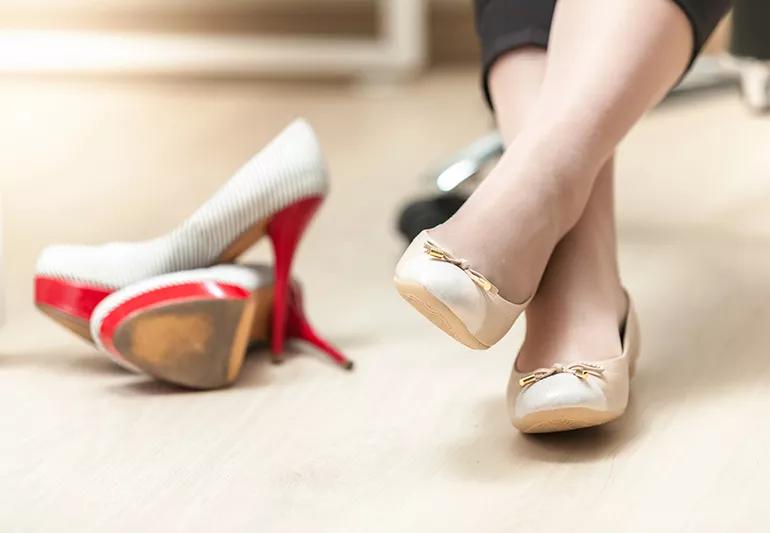A tear in the stabilizing structure under your foot is a common cause

Pain in the ball of the foot and swelling on top of the foot are symptoms of a condition that’s both common and often misdiagnosed. The condition — called a plantar plate tear — can happen either suddenly or as a result of chronic, repetitive stress over time.
Advertisement
Cleveland Clinic is a non-profit academic medical center. Advertising on our site helps support our mission. We do not endorse non-Cleveland Clinic products or services. Policy
The plantar plate is a fibrous structure under your foot that supports and stabilizes the joints between the toe bones and the bones of the foot. (These are the metatarsophalangeal joints).
Made up of collagen, the plantar plate consists of bands that provide attachments for ligaments that go to each toe and that go between toes. These keep your toes straight (preventing them from drifting up) and also in alignment (preventing them from separating).
“The plantar plate is implicated in forefoot pain much of the time,” says podiatrist Georgeanne Botek, DPM.
There are 3 causes of plantar plate tears, Dr. Botek says:
Structural. A bunion or crossover deformity (when one toe crosses over the one next to it) can put added pressure under the foot.
Traumatic. “A plantar plate can tear from an injury, like tripping over a dog’s leash or your are running and all of a sudden you feel a sharp, shock-like, stabbing sensation across the ball of the foot,” Dr. Botek says.
Chronic, repetitive stress. With age, the plantar plate can wear down and be susceptible to tearing. Any active adult (usually over age 45) can have a plantar plate tear. But people who spend a lot of time on the balls of their feet (think: working on ladders or wearing high heels) and those who bend their toes a lot are susceptible.
The most common site for a plantar plate tear is under the second toe, but it can happen under any toe.
Even though plantar plate tears are common, they aren’t always recognized. “It’s not unusual for someone to go many months and not realize this is the source of their pain,” Dr. Botek says.
Advertisement
A plantar plate may be misdiagnosed as:
Plantar plate tears are diagnosed with a physical exam, medical history and X-rays. An MRI or ultrasound may also be used.
Treatment involves placing and holding the affected toe in a position that allows the tear to heal. “I flex the toe 10 degrees, bringing it lower than the adjacent toe, so the edges of the torn plantar plate come together. Then, I crisscross tape along the bottom of the foot to hold the toe down,” Dr. Botek explains.
There are also splints that can be used to hold the toe in this position. It typically takes three to six months to heal. Dr. Botek advises patients to wear stiff-soled shoes and shoe inserts with metatarsal pads.
If these measures don’t help or if a deformity has already formed, surgery is an option. It’s often done in conjunction with surgery for other foot deformities.
Advertisement
Learn more about our editorial process.
Advertisement

Dulling feeling in your feet could cause problems

You might have plantar fasciitis, Achilles tendinitis or arthritis

Heel spurs aren’t the only culprit when it hurts to walk

Toe spacers and separators can add some comfort, but they’re not a fix-all

How to spot and recover from running injuries

Pick shoes that make your feet happy and are good for your overall health

Most recommended precautions center around minimizing bruising or swelling

Type 2 diabetes isn’t inevitable with these dietary changes

Applying a hot or cold compress can help with pain